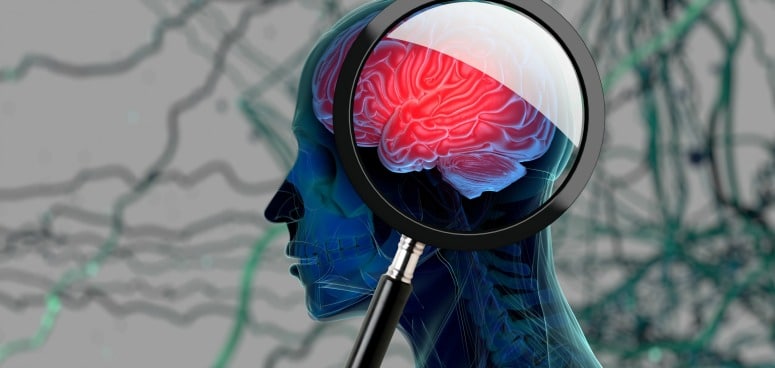Alcohol or drugs are often used to self-medicate the oppressive symptoms of mental health problems. People often abuse substances to ease the pain of an undiagnosed psychological disorder, to cope with difficult emotions, or to temporarily improve their mood. Unfortunately, these risk factors can create a vicious cycle of dependency, compounded mental health issues, and drug addiction. When a person suffers from two disorders at the same time, a comprehensive treatment plan must be developed to address both conditions in order to achieve long-term recovery.
- What is the new term for dual diagnosis?
- Co-occurring substance abuse and mental disorders statistics
- What are the most common co-occurring disorders?
- What are the most common conditions with a dual diagnosis?
- What is the most common dual diagnosis?
- Can you have two mental illnesses at the same time?
- What disorders are most often comorbid?
- What is anxiety most frequently comorbid with?
- What are the most comorbid personality disorders?
What is the new term for dual diagnosis?
Mental health disorders and substance use disorders (SUD) often occur together. Many people who develop SUDs are also diagnosed with a mental condition. And the reverse is true as well–many people with psychological problems will develop an SUD. When two or more disorders occur at the same time, it’s identified as a dual diagnosis. However, it’s frequently called a co-occurring disorder and comorbidity. Treatment programs, that also include both mental health and addiction treatment, must be developed to address both conditions at the same time.
Co-occurring substance abuse and mental disorders statistics
According to data from the National Institute on Drug Abuse (NIDA), 7.7 million adults have co-occurring mental and substance abuse disorders (SUDs). Of the 20.3 million adults who have SUDs, 37.9% have a mental illness. Of the 42.1 million adults who have a mental illness, 18.2% have an SUD.
Not everyone with co-occurring conditions gets the treatment they need:
- No treatment for SUD or mental health treatment: 52.5%
- Received mental health care only: 34.5%
- Received both SUD and mental health treatment: 9.1%
- Received SUD treatment only: 3.9%
Among adults with co-occurring disorders who didn’t receive mental health care, their reasons for not receiving it were:
- 52.2% said they could not afford the cost.
- 23.8% said they did not know where to go for treatment.
- 23.0% said they could handle the problem without treatment.
- 13.6% said they feared being committed.
Among adults with co-occurring disorders who didn’t receive substance use care, their reasons for not receiving it were:
- 38.4% said they were not ready to stop using.
- 35.1% said they had no health insurance and could not afford the cost.
- 13.1% said it might cause their neighbors to have a negative opinion of them.
- 13.0% said it might have a negative effect on their job.
What are the most common co-occurring disorders?
The most common co-occurring disorders include:
- Clinical depression
- Bipolar disorder
- Attention deficit hyperactivity disorder (ADHD)
- Post-traumatic stress disorder (PTSD)
- Generalized anxiety disorder (GAD)
What are the most common conditions with a dual diagnosis?
Below is a breakdown of the most common mental health conditions typically diagnosed with a co-occurring SUD:
Mood Disorders:
- Depression
- Bipolar Disorder
- Major depressive disorder
- Dysthymia disorder
Anxiety Disorders:
- PTSD
- Obsessive-compulsive disorder
- Generalized anxiety disorder
- Social anxiety disorder
- Panic Disorders
What is the most common dual diagnosis?
Dual-diagnosis conditions feed off each other, exacerbating the symptoms of each disorder at the same time. Researchers find that 50% of people who experience an SUD also suffer from a mental health condition.
The most common co-occurring disorders include:
- Meth Addiction and Psychosis
- Prescription Drug Addiction and Anxiety
- Alcoholism and Depression
- Opioid Addiction and Post-Traumatic Stress Disorder (PTSD)
- Marijuana Addiction and Schizophrenia
- Benzodiazepine Dependence and Anxiety
- Alcoholism and Attention-Deficit Hyperactive Disorder (ADHD)
Can you have two mental illnesses at the same time?
Yes. Psychology Today estimated that 7.9 million U.S. adults live with more than one mental disorder. For instance, conditions like anxiety disorders and depression or bipolar disorder are commonly experienced simultaneously.
What disorders are most often comorbid?
Large-scale studies suggest that comorbid mental health issues are very common. Having one mental disorder can increase a person’s risk of developing other psychological problems. One study conducted in 2023 found that 75% of people with a high risk for psychosis also had a co-occurring mental condition. The most common comorbid disorders included mood and anxiety disorders, trauma-related conditions like PTSD, and personality disorders.
What is anxiety most frequently comorbid with?
According to the National Alliance on Mental Illness, one of the more common comorbidities is depression and anxiety. Some estimates show that 60% of those with anxiety will also have symptoms of depression, and the numbers are similar for those with depression who also suffer anxiety.
What are the most comorbid personality disorders?
Borderline personality disorder (BPD) and antisocial personality disorder are some of the most common disorders co-occurring with an SUD. According to the National Institute of Mental Health (NIMH), nearly 23% of people with a personality disorder have a SUD comorbidity, and approximately 40% of people, specifically with BPD, have a co-occurring SUD.
Dual Diagnosis Treatment at Into Action Recovery
We understand that treating both addiction and mental health is important for effective recovery. If you or a loved one needs help overcoming addiction, we’re here to get you started on your journey to life-long sobriety.
Call us today at 844-303-3969 to schedule an appointment or learn more about our programs.



